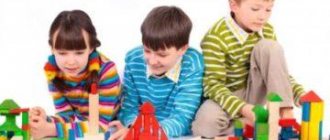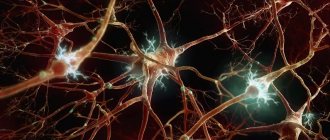School maladjustment - what is it, concept
With the beginning of educational activities, big changes appear in the child’s life. At this stage, his psyche may experience stress due to changes in lifestyle, new demands from parents and teachers.
Therefore, it is extremely important to monitor the general condition of the student and help him avoid difficulties in the process of adaptation to the school environment.
This article will discuss the concept of school maladaptation, its main causes, types of manifestation, and also provide recommendations for correction and prevention developed by psychologists and teachers.
School maladjustment does not have an unambiguous definition in science, because in every science, be it pedagogy, psychology and social pedagogy, this process is studied from a certain professional angle.
School maladjustment is a violation of the child’s adequate mechanisms of adaptation to the school environment, affecting his educational productivity and relationships with the outside world. If we bypass scientific terminology, then in other words, school maladjustment is nothing more than a psychosomatic deviation that prevents a child from adapting to the school environment.
According to psychologists, schoolchildren who experience difficulties in adaptation may have problems mastering school material, resulting in low academic performance, as well as difficulties in forming social contacts both with peers and with adults.
The personal development of such children, as a rule, is delayed; they are infantile, deceitful, subject to the influence of others, and do not hear their “I”. Most often, younger schoolchildren face maladaptation, but in some cases, high school students as well.
As a rule, children with this kind of problems in primary school stand out from the entire team:
- emotional instability;
- frequent absence from school;
- sudden transitions from passivity to activity;
- frequent complaints of feeling unwell;
- lagging behind the curriculum.
High school children who have difficulty adapting are more likely to:
- - increased sensitivity, sudden outbursts of emotions;
- - the emergence of aggressiveness, conflicts with others;
- - negativism and protest;
- - manifestation of character through appearance;
- - can keep up with the curriculum.
Classification
There is no single approach to the issue of classification in psychology. For example, Kogan in his works distinguishes between psychogenic, neurotic, psychopathic, organic (depending on the reasons for development) forms. However, a detailed description of all these types is not available.
Most often in the literature and in practice, the classification of S. A. Belicheva is used. According to her, school maladaptation occurs:
- pathogenic: the result of phobias and disorders of the central nervous system, brain, analyzers;
- psychosocial: a consequence of puberty, bright accentuations of character, unhealthy manifestations of emotions, insufficient mental development;
- social: formed due to the lack of basic education, value orientations, antisocial behavior, and deformation of social attitudes.
This classification is also based on an assessment of the causes leading to the development of behavioral disorders. Each of these types is characterized by different manifestations.
Causes of school maladjustment
Psychologists studying the phenomenon of maladjustment identify the following among the main reasons:
- strong suppression by parents and teachers - overprotection (fear of failure, shame, fear of making mistakes);
- disorders of a somatic nature (weak immunity, diseases of internal organs, physical fatigue);
- poor preparation for school (lack of certain knowledge and skills, poor motor skills);
- poorly formed foundation of some mental functions, as well as cognitive processes (inadequately high or low self-esteem, inattention, poor memory);
- specifically organized educational process (complex program, special bias, fast pace).
Features of the flow
Age characteristics
Primary School
On the one hand, maladjustment of children of primary school age affects more than 80% of students. This is a large percentage for which several parties are to blame: parents, kindergarten teachers and elementary school teachers. Each of them must psychologically and physically prepare the child for such a serious transition.
On the other hand, at this age the condition is quickly corrected. As practice shows, thanks to the efforts of teachers, psychologists and those same parents, by the end of 1st grade it is diagnosed in only 20% of students (average indicators).
Causes of socio-psychological maladjustment in younger schoolchildren:
- insufficient or problematic intellectual and psychomotor development;
- the inability to control one’s own behavior as a result of the no-holds-barred upbringing that is now in vogue;
- physical weakness, pain, asthenic type of nervous system;
- excessive impressionability;
- hyperexcitability;
- lack of interest in studying when the leading activity remains playing;
- inadequate self-esteem.
high school
When moving from 4th to 5th grade, some children may also adapt poorly due to the fact that one teacher is replaced by several at once, and attention to him weakens, and the demands become greater. However, teachers and psychologists immediately identify these (there are only 5-10%) at the initial stage of the formation of a disorder and carry out appropriate work.
High school
From 8th to 11th grade, the number of difficult teenagers who are diagnosed with school maladaptation sharply increases due to a change in orientation (friends and self-affirmation among them come first) and puberty. The difficulties of correction are associated precisely with the last factor, since teenagers cannot control their own bodies. Changes in hormonal levels provoke mood swings, rebellious behavior, nervousness, etc. At the end of puberty, everything falls into place.
Gender characteristics
Maladaptation is more often diagnosed in boys than in girls for a number of reasons:
- biological factor - the vulnerability of the central nervous system to the development of mental disorders is higher in boys;
- gender-role factor - in education, boys are under more pressure (they must help, protect, support, give in; they must not cry, be weak, etc.);
- quantitative factor - there are more girls in the class than boys, and they support each other.
Physiological features
According to the new educational standard, from 2021, parents can bring children with disabilities to regular schools, who previously had the right to study only in specialized educational institutions. Over the two years of the existence of this Law, psychologists and teachers have been trying to convey to the public that such a decision is untenable precisely because of the widespread maladjustment of children with disabilities at school.
In specialized educational institutions they were given sufficient attention so that they got used to the new conditions of their existence outside the home and compliance with norms and rules. The rhythm of life in a regular school does not allow this. The result is that both the mental and physical condition of a disabled child worsens.
Types of manifestation of school maladjustment
1. Cognitive – manifests itself as the student’s general poor performance. There may be chronic underachievement, lack of skills, fragmentary acquisition of knowledge. Lack of adaptation to the collective pace - being late for lessons, taking a long time to complete a task, getting tired easily.
2. Emotionally - evaluative - there are violations of the emotional attitude towards individual lessons, teachers, and possibly to learning in general. “Fear of school” is a child’s reluctance to go to class, anxiety, tension. Uncontrolled manifestation of violent emotions.
3. Behavioral – weak self-regulation, inability to control one’s own behavior, aggression and conflict appear. Lack of learning motivation manifests itself in a reluctance to do homework and a desire to engage in other activities.
Diagnostics
Scheme of examination of a junior schoolchild:
- Carrying out one of the diagnostic techniques.
- Psychological testing.
- Examination by a doctor.
- Interview between a psychologist and a teacher.
- Interview with parents.
The following diagnostic techniques exist.
For elementary school:
- Luskanova’s projective technique “What do I like about school?”;
- Kern and Jirasek's method for indicative school maturity;
- Nemova’s technique “What Am I?”
For middle and senior management:
- Phillips test for school anxiety;
- Balabakina’s methodology for attitude towards school subjects;
- sociometry J. Moreno;
- Lukyanova and Kalinina’s methodology for learning motivation.
Pedagogical diagnostics of the prerequisites for school maladaptation (to identify provoking factors) is also contained in each of these methods.
Correction of maladjustment in school-age children
Currently, there is no unified method for solving problems with the adaptation of a schoolchild, since this problem includes several aspects of a child’s life. Here you need to take into account the medical, pedagogical, psychological and social aspects.
It is for this reason that it is necessary to understand the seriousness of this problem and solve it through qualified specialists.
Since psychological assistance in resolving this issue is the main one, either a school psychologist or a private psychologist, or in some cases a psychotherapist, can work with a child experiencing difficulties.
Specialists, in turn, to determine methods for correcting school maladaptation, conduct a detailed study of the student’s life and identify the main points:
- learn in detail about the child’s social environment, the conditions of his development, collecting a detailed anamnesis;
- assess the level of psychophysical development of the child, taking into account his individual characteristics, conduct special tests appropriate to the child’s age;
- determine the nature of the student’s internal conflict leading to crisis situations;
- identify factors that provoke manifestations of signs of maladjustment;
- draw up a program of psychological and pedagogical correction, focusing specifically on the individual characteristics of a given child.
Teachers are also inextricably linked with the process of creating positive conditions for student adaptation. It is necessary to focus on creating comfort in the lesson, a favorable emotional climate in the class, and to be more restrained.
But it is important to understand that without family support , the chances of developing positive dynamics are quite limited. That is why parents need to build friendly relationships with their children, encourage them more often, try to help and, of course, praise them. It is necessary to spend time together, play, come up with joint activities, and help develop the necessary skills.
If a child does not have a good relationship with a teacher at school or with peers (outcast option), parents are advised to consider options for transferring to another school. There is a possibility that in another school the child will become interested in educational activities and will also be able to establish contacts with others.
Components
The following components of the psychological state are distinguished.
Cognitive
Signs:
- failure to complete homework;
- lack of activity in class;
- refusal to go to the board;
- handing in a blank notebook for tests;
- low mental abilities;
- lack of knowledge, skills, abilities;
- poor performance in most subjects (the main feature of the component).
The cognitive component of maladaptation at school leads to the fact that the child is sent to a psychological and pedagogical commission, where they decide to retain him for repeated education.
Emotional-personal
Signs:
- reluctance to think about life prospects (if I don’t study, I won’t pass exams, won’t get a certificate, won’t go anywhere, won’t make it in life, etc.);
- treating school as a meeting place with friends, but not as an educational institution;
- lack of life principles, guidelines, moral values, motivation (leading feature);
- problematic social circle.
With the professional approach of a teacher-psychologist, the emotional-personal component can be successfully corrected even in adolescence.
Behavioral
Signs:
- antisocial behavior (main symptom);
- refusal reactions;
- anti-discipline;
- ignoring school rules;
- rudeness, name-calling;
- contrasting oneself with others.
Behavioral strategies of maladjusted schoolchildren can be different:
- passive-indifferent attitude to the learning process: does not respond to the demands and comments of elders, is characterized by indifference and unhealthy calmness (not giving a damn, as teenagers say);
- negative protest behavior: he is insolent and rude to adults and other children only if he is offended (asked to go to the board, made a remark, pushed, etc.);
- demonstrative protest behavior: he himself goes into conflict, trying to attract everyone's attention.
The behavioral component has a persistent, repetitive nature and is difficult to correct.











